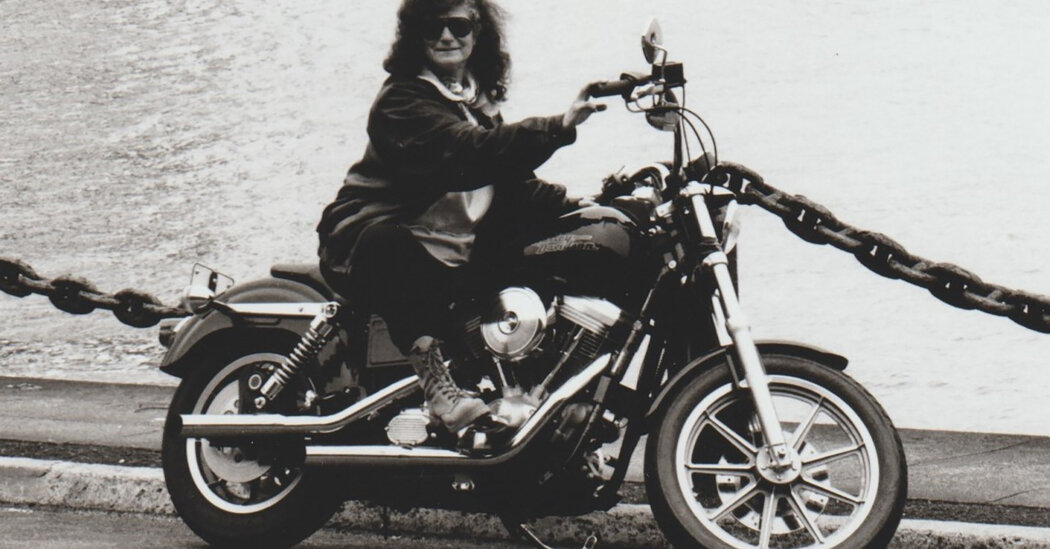Barbara Joans, an iconoclastic anthropologist and feminist who, in her early 60s, became something of a Margaret Mead in black leather, steering her Harley-Davidson deep into a biker culture and producing the 2001 book, “Bike Lust: Harleys, Women, and American Society,” died on March 6 in Santa Cruz, Calif. She was 89.
The cause of her death, in an assisted living facility, was cardiopulmonary failure, her son Howard Schwartz said.
Ms. Joans, Brooklyn-born, plucky and outspoken, began her career as an instructor at the New School for Social Research in Greenwich Village, with a focus on women’s issues, producing papers on topics like the anthropological aspects of menopause.
Starting in the 1960s, she was also a feminist crusader, helping women arrange illegal abortions in the days before Roe v. Wade. In 1970, she participated in a daylong occupation of The Ladies’ Home Journal’s editorial offices in New York to demand the opportunity to put out a “liberated” version of the magazine.
“She was a bit of a wild woman, a genuine nonconformist,” Phyllis Chesler, author of “Women and Madness” (1972) and a longtime friend of Ms. Joans’s, said in a phone interview. “Yes, she was an academic and a nice Jewish girl from Brooklyn. But she was a little bit of a street hombre.”
In her 50s, that designation became more literal when Ms. Joans, then a professor of anthropology at Merritt College in Oakland, Calif., bought her first motorcycle, and unwittingly opened a new field of study for herself.
“To the Harley rider, there are two kinds of bikes,” she wrote in the introduction to “Bike Lust.” “There are Harleys, and there are all other kinds of motorcycles.”
Setting out on her brawny Harley-Davidson Low Rider, which she nicknamed the Beast, Ms. Joans researched the subculture, with its many splinters and subgroups, on weekend rides with a San Francisco-based motorcycle club, the Fog Hogs, as well as in motorcycle shops, biker bars and at Harley festivals.
By the 1980s and ’90s, Harley culture, long associated with roughnecks like the Hells Angels, was going mainstream as a new wave of middle class professionals adopted chrome-encrusted “hogs” as a ticket to adventure.
During those years, female enthusiasts were making their presence felt, accounting for 10 to 12 percent of the motorcycling population, she said in a 2003 CNN interview. “Women, who used to be excluded from any position except that of back-seat Betty,” she…
Click Here to Read the Full Original Article at NYT > Travel…
